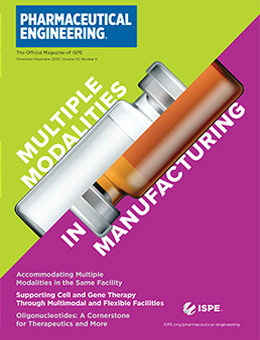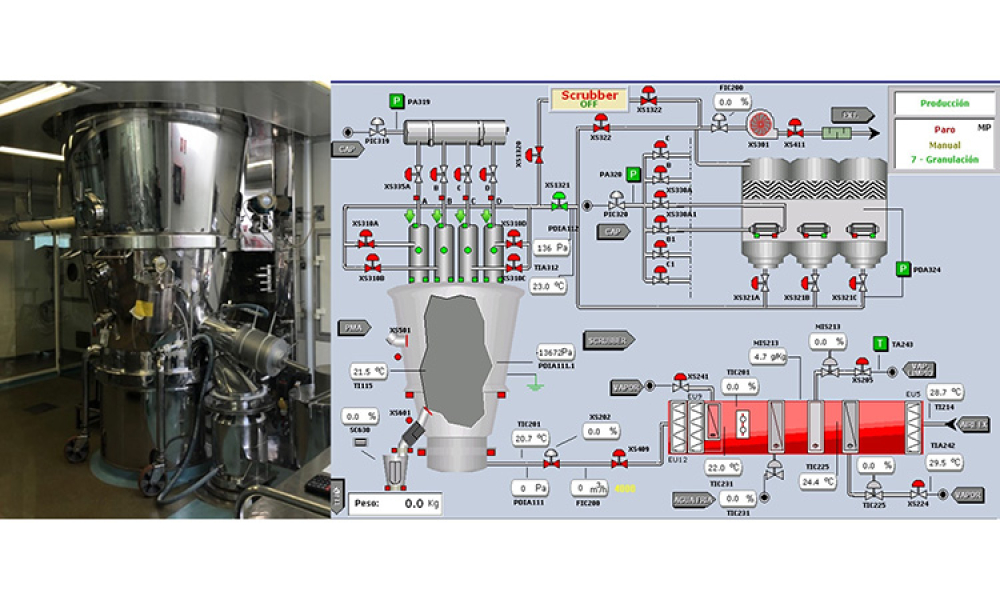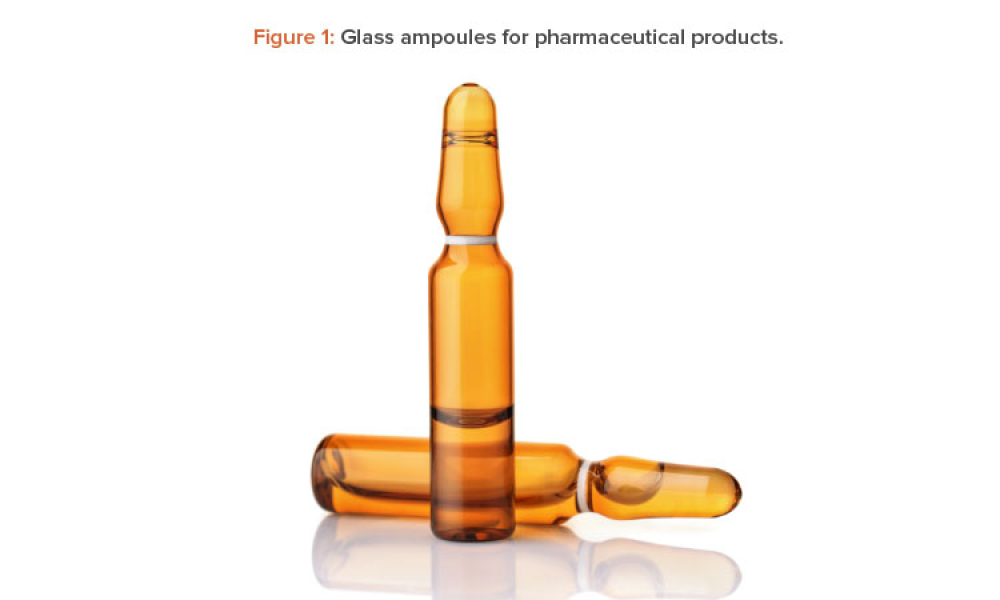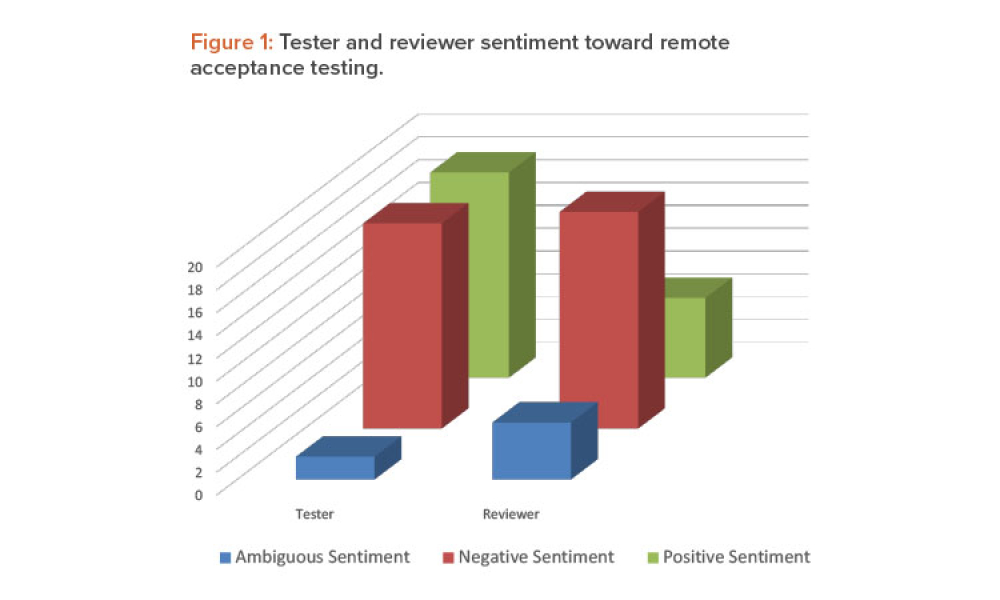This article shows how non-supervised artificial intelligence (AI) methods can strongly support common processes in the pharmaceutical industry such as wet granulation drying. The techniques used demonstrate how continuous process optimization can be enabled and the process control strategy is permanently updated while keeping product quality under strong assurance and also increasing energy...

Downloads
Accommodating Multiple Modalities in the Same Facility
Cover: Many organizations are evaluating how advanced therapy medicinal products (ATMPs) and other traditional modalities may be combined within the same facility or within a newly constructed agnostic building. This article outlines a broad framework to evaluate di erent types of modalities that may be accommodated concurrently in a new or existing facility and then uses a case study to explain how the approach may be applied to an existing facility.
Supporting Cell & Gene Therapy through Multimodal & Flexible Facilities
Feature: Cell and gene therapies (C>) have unique needs in manufacturing suites that differ from those for classic product biopharmaceuticals. Facilities must be created with flexibility in mind, able to run multiple products and production types to remain viable.
Oligonucleotides: A Cornerstone for Therapeutics & More
Feature: Resounding clinical successes and maturation of extensive therapeutic pipelines have catapulted oligonucleotides from a fringe modality to therapeutic relevance in just a few short years. Oligonucleotides are a cornerstone of a burgeoning class of drugs classified as nucleic acid therapeutics. These therapies interact with DNA and RNA targets rather than traditional protein therapeutic targets. Oligo therapies offer access to gene regulation mechanisms that were previously inaccessible for treatment. Oligos are also a key component of gene editing systems, serving as the guiding instructions for DNA and RNA editing technologies.
AI Retrofit: Tackling Challenges with Cutting-Edge Technologies
TECHNICAL: This artificial intelligence (AI) retrofit project was a unique approach to implementing AI technology in a pharmaceutical environment within three months. This project tackles a commonly known industry challenge by integrating AI into an existing automatic visual inspection (AVI) machine. The proof of value allowed us to benchmark added value through AI compared with state-of-the-art automated visual inspection.
Remote Acceptance Testing of Automation Projects
TECHNICAL: Before the COVID-19 pandemic, it was unthinkable for a system integrator to suggest remotely conducting an acceptance test for an automation project. This article shows how automation engineers and client validation personnel were successful in navigating COVID-19 restrictions and overcoming previously held preconceptions about remote testing to meet end-user and regulatory requirements. Although there were some advantages, both testers and reviewers found the experience inefficient and unsatisfactory in terms of rapport and visibility.
In This Issue
An interview with Shin Kawamata of Japan’s Foundation for Biomedical Research and Innovation (FBRI) highlights exciting work to move cell therapy toward reliable and scalable commercialization.
Cell and gene therapies (C>) have unique needs in manufacturing suites that differ from those for classic product biopharmaceuticals. Facilities must be created with flexibility in mind, able to run multiple products and production types to remain viable.
Resounding clinical successes and maturation of extensive therapeutic pipelines have catapulted oligonucleotides from a fringe modality to therapeutic relevance in just a few short years. Oligonucleotides are a cornerstone of a burgeoning class of drugs classified as nucleic acid therapeutics. These therapies interact with DNA and RNA targets rather than traditional protein therapeutic...
When the ISPE Baseline Guide Vol. 5, Commissioning & Qualification, 2 ed. was published in 2019, most of the attention was focused on the incorporation of quality risk...
For nearly a century, production of water for injection (WFI) was universally accepted to be distillation-based. As emphasis on costs and environmental concerns has grown, pharmacopeias around the world have focused on the quality attributes of WFI to allow for consideration of other production technologies.
This artificial intelligence (AI) retrofit project was a unique approach to implementing AI technology in a pharmaceutical environment within three months. This project tackles a commonly known industry challenge by integrating AI into an existing automatic visual inspection (AVI) machine. The proof of value allowed us to benchmark added value through AI compared with state-of-the-art...
Before the COVID-19 pandemic, it was unthinkable for a system integrator to suggest remotely conducting an acceptance test for an automation project. This article shows how automation engineers and client validation personnel were successful in navigating COVID-19 restrictions and overcoming previously held preconceptions about remote testing to meet end-user and regulatory requirements....
Has it really been a year since I began my term as Chair of the ISPE International Board of Directors? It seems like yesterday, and now the
We don’t often take time for reflection, except when in times of trial or transition. I recently needed to update my resume, which forced some reflection on what I had done of note since my last update. This reminded me that we are coming up on the end of the year, a transition to new leadership and new goals, and maybe even cleaning up our toolboxes.
The inclusive nature of ISPE promotes diversity in thought, providing pharma professionals of all levels, geographic, and cultural backgrounds the opportunity to share their knowledge and collaborate across borders. ISPE’s...
More than 400 attendees learned about the latest developments in biopharmaceuticals, cell and gene therapy, and ATMPs at the 2022 ISPE Biotechnology Conference, held 28–30 June in Boston, Massachusetts.
Combination Products is one of ISPE’s newest Communities of Practice (CoPs). It started as a Special Interest Group to help people in the industry collaborate and learn from each other.
Many organizations are evaluating how advanced therapy medicinal products (ATMPs) and other traditional modalities may be combined within the same facility or within a newly constructed agnostic building. This article outlines a broad framework to evaluate different types of modalities that may be accommodated concurrently in a new or existing facility and then uses a case study to explain how...














